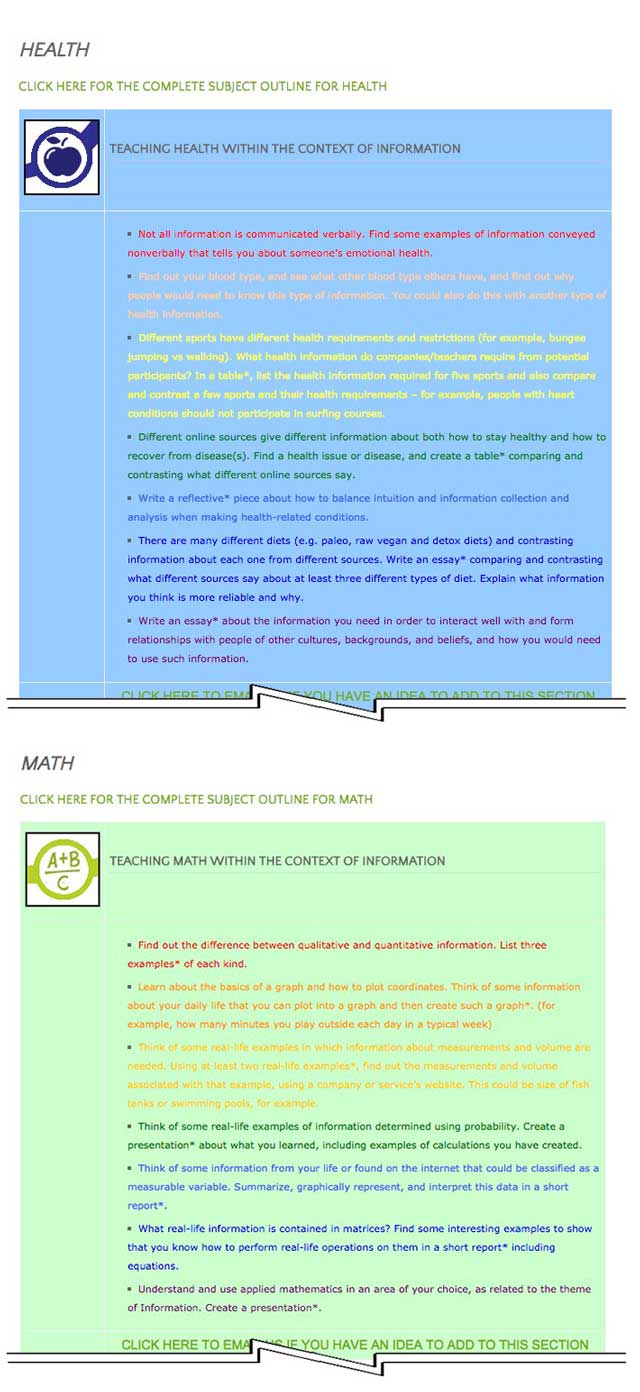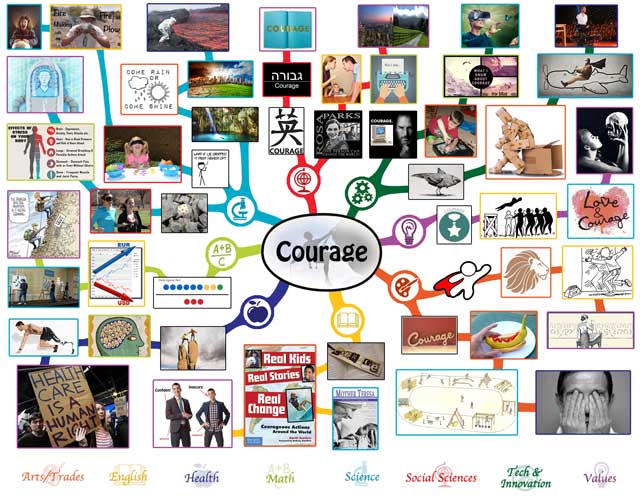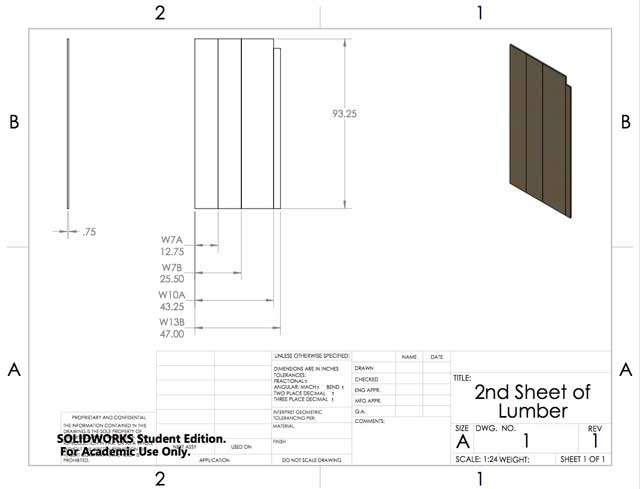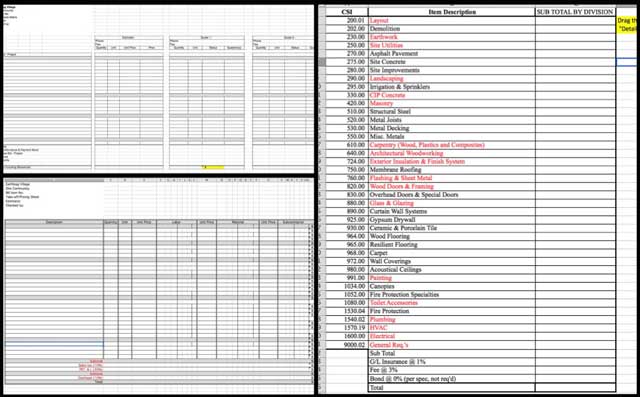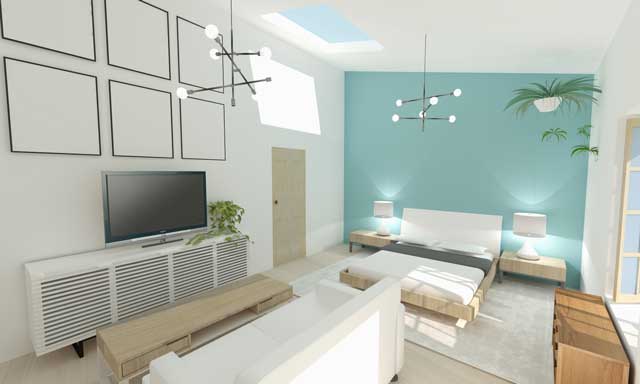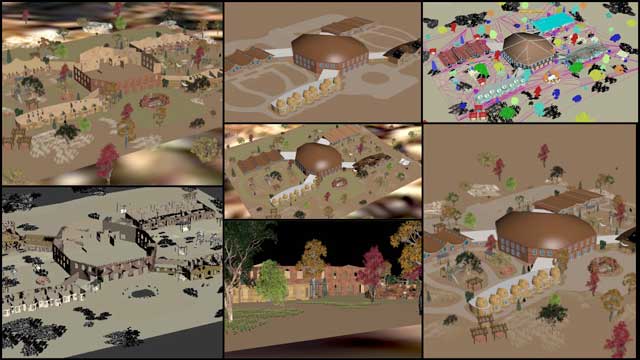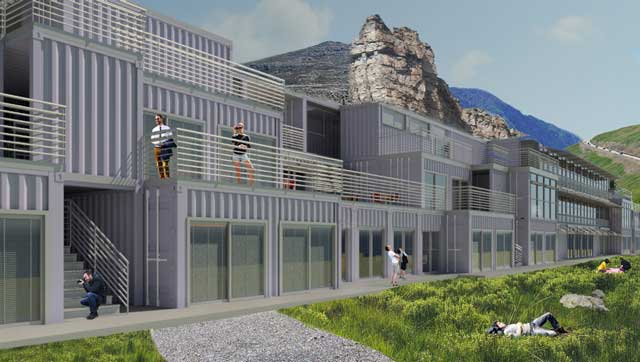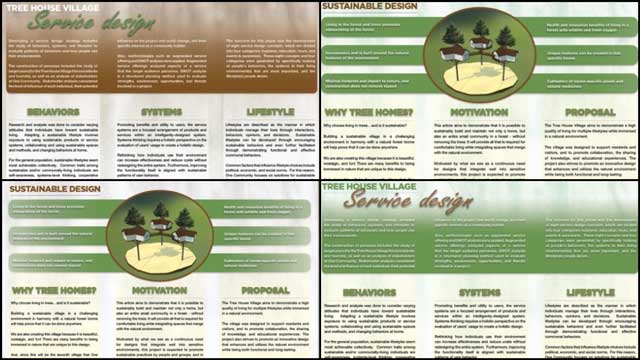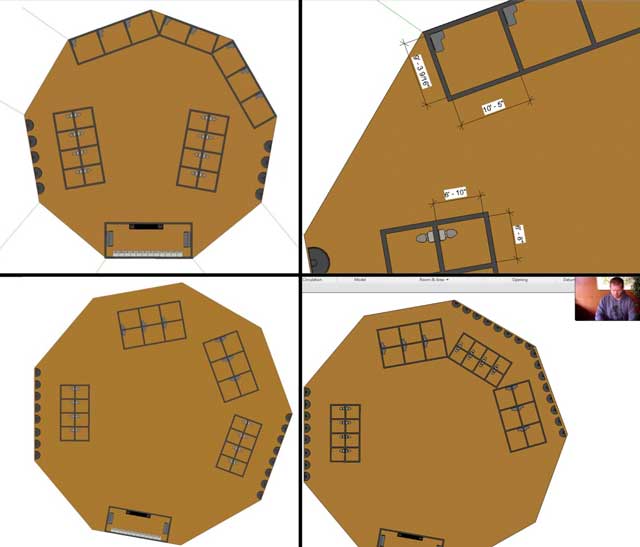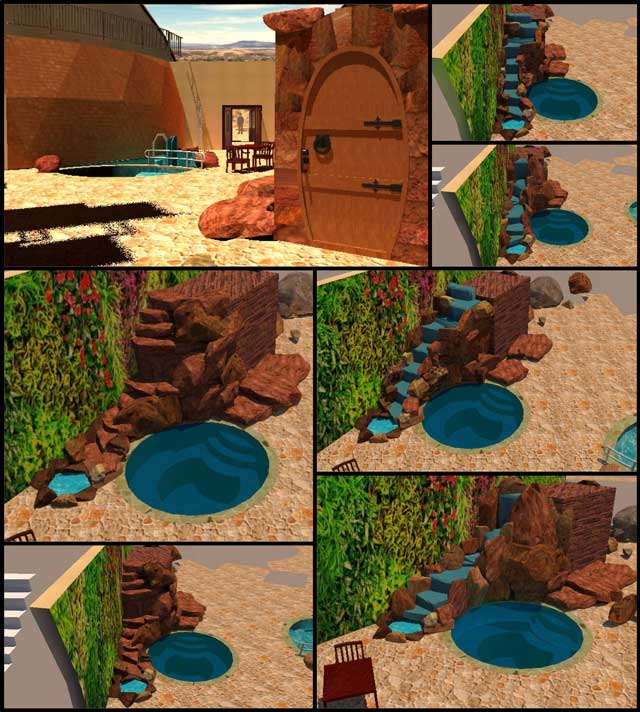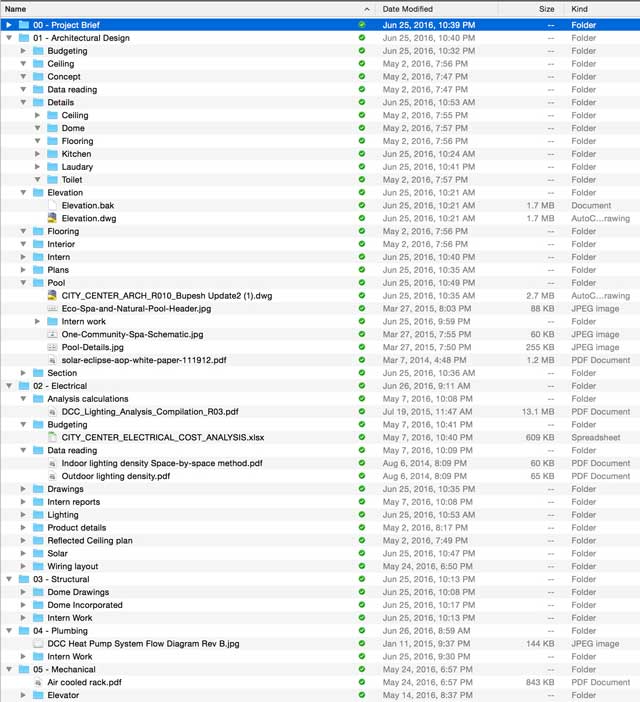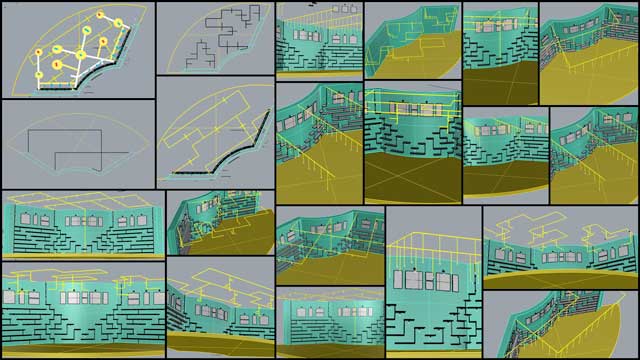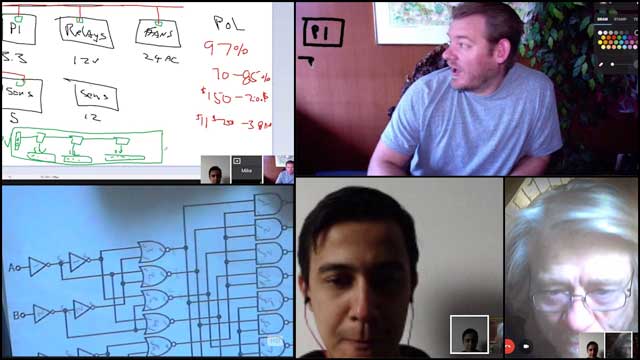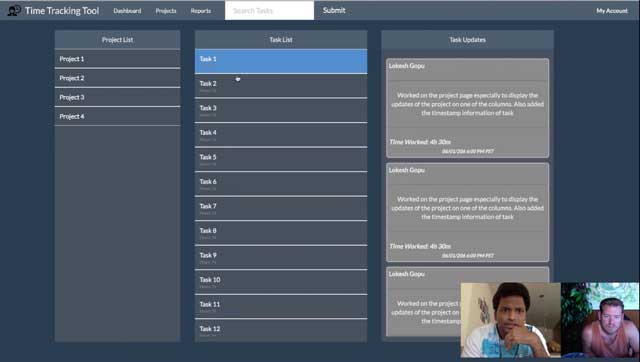Eco-Living and Design – One Community Weekly Progress Update #169
It is time for eco-living and design to progress beyond just food, energy, and housing to additionally include Highest Good approaches to education, for-profit and non-profit economics design, social architecture, fulfilled living, and stewardship practices. By doing this we can combine physical sustainability with emotional sustainability foundations and create a way of living that most people will consider better than how they are living now. Open sourcing and free-sharing it all will make it easy enough and affordable enough to spread on its own.
- Here’s our project overview
- Here’s our world-change methodology
- Here’s how this becomes self-replicating
- Here’s how we are open source and free-sharing all the do-it-yourself designs

OUR MAIN OPEN SOURCE HUBS
Click on each icon to be taken to the corresponding Highest Good hub page.
One Community’s physical location will forward this movement as the first of many self-replicating teacher/demonstration communities, villages, and cities to be built around the world. This is the June 19th, 2016 edition (#169) of our weekly progress update detailing our team’s development and accomplishments:
Eco-Living and Design
One Community Progress Update #169
Here is the bullet-point list of this last week’s design and progress discussed in detail in the video above:
ECO-LIVING AND DESIGN INTRO: @1:00
ECO-LIVING AND DESIGN – HIGHEST GOOD EDUCATION: @1:58
- Transferred second 25% of written content for the Information Lesson Plan to the website (see below)
- Behind the scenes: wrote third 25% of the written part of the Information Lesson Plan (see below)
- Completed the final 25% of the mindmap for the Courage Lesson Plan (see below)
ECO-LIVING AND DESIGN – HIGHEST GOOD FOOD: @2:53
- Behind the scenes: Compiled all the rice recipes which will later be added to our updated recipe strategy page. This work is done as part of the development of our Food Self-sufficiency Transition Plan, which features contributions from Naturopathic Doctor Matt Marturano (see below)
- Shadi Kennedy finished render looking Northeast for the Tropical Atrium Planting and Harvesting plan page (see below)
ECO-LIVING AND DESIGN – HIGHEST GOOD HOUSING: @3:39
- Put another 10 hours into the behind-the-scenes revision for the Footers, Foundations and Flooring page for the crowdfunding campaign we are developing (see below)
- Sal Rubio continued working on creating professional do-it-yourself Earthbag Village Murphy Bed furniture assembly instructions (see below)
- Ganyang Du began working on the Materials Schedules layouts for the Earthbag Village Materials page (see below)
- Ray Triboulet began working on final revisions and edits for the communal Vermiculture Eco-Toilet designs that are part of the Earthbag Village (see below)
- Brianna Johnson continued evolving the renders for the Straw Bale Village (see below)
- Dean Scholz further developed what’s necessary for us to create quality Cob Village renders (see below)
- Guy Grossfeld joined the team and began adding people, backgrounds, and other details to the renders for the Shipping Container Village (see below)
- Zachary Melin continued updating the Tree House Village book created by last year’s intern Team (see below)
- Jesika Rohrbach continued designing and exploring different Tree House Village bathroom tower options (see below)
ECO-LIVING AND DESIGN – DUPLICABLE CITY CENTER: @6:42
- Continued working on what is needed for the first renders of the natural pool and spa area aspects of the Duplicable City Center (see below)
- Dipti Dhondarkar completed an analysis of the City Center lighting requirements and suggestions completed by last year’s intern team with the requirements and suggestions from P2S Engineering (see below)
- Neha Verma finished re-organizing the hundreds of City Center files for us (see below)
- Iris Hsu continued exploring recycled pipe shelving and overhead lighting options for the Duplicable City Center library (see below)
- Behind the scenes: Mike Hogan and Lucas Tsutsui da Silva continued with circuit board testing for the City Center Control Systems designs (see below)
ECO-LIVING AND DESIGN – HIGHEST GOOD SOCIETY: @8:27
- Created new icons for the Pledge page and added new menus to the tops of the associated values pages for Love and Connection, Honesty and Integrity, FulfilledLiving, Freedom, Diversity, Contribution, Consensus/Decision Making, Community, and Communication (see below)
- Updated icons for the Highest Good Economics open source hub and all pages associated with the hub (see below)
- Lokesh Gopu continued developing the Highest Good Network software (see below)
ECO LIVING AND DESIGN SUMMARY: @9:09
- How you can most help us right now and how anyone can help
CLICK HERE IF YOU’D LIKE TO RECEIVE AN EMAIL EACH WEEK WHEN WE RELEASE A NEW UPDATE
YOU CAN ALSO JOIN US THROUGH SOCIAL MEDIA
ONE COMMUNITY WEEKLY UPDATE DETAILS
ECO-LIVING AND DESIGN – HIGHEST GOOD EDUCATION PROGRESS
 One Community is facilitating eco living and design through Highest Good education that is for all ages, applicable in any environment, adaptable to individual needs, far exceeds traditional education standards, and more fun for both the teachers and the students:
One Community is facilitating eco living and design through Highest Good education that is for all ages, applicable in any environment, adaptable to individual needs, far exceeds traditional education standards, and more fun for both the teachers and the students:
- Learn about the components: Education open source hub
- Learn how the components work together: How to use the Education for Life Program
This last week the core team transferred the second 25% of the written content for the Information Lesson Plan to the website, as you see here. This lesson plan purposed to teach all subjects, to all learning levels, in any learning environment, using the central theme of “Information” is now 50% completed on our website.
Behind the scenes, we wrote the third 25% of the written part of the Information Lesson Plan.
We also completed the final 25% of the mindmap for the Courage Lesson Plan, bringing it to 100% complete, which you see here:
ECO-LIVING AND DESIGN – HIGHEST GOOD FOOD PROGRESS
 One Community is forwarding eco living and design through Highest Good food that is more diverse, more nutritious, locally grown and sustainable, and part of our open source botanical garden model to support and share bio-diversity:
One Community is forwarding eco living and design through Highest Good food that is more diverse, more nutritious, locally grown and sustainable, and part of our open source botanical garden model to support and share bio-diversity:
- Learn about the structures: Hoop House Hub | Aquapini & Walipini Open Source Hub
- See what we’ll be growing: Gardens & Hoop Houses | Large-scale Structures | Food Forest | TA
As part of the development of our our Food Self-sufficiency Transition Plan, which features contributions from Naturopathic Doctor Matt Marturano (creator of the COHERENT model for comprehensive digestive health), this week we compiled all of the rice recipes as you see here. They will be added to our updated recipe strategy, which is in progress.
Shadi Kennedy (Artist and Graphic Designer) also finished this render looking Northeast for the Tropical Atrium Planting and Harvesting plan page:
ECO-LIVING AND DESIGN – HIGHEST GOOD HOUSING PROGRESS
 One Community is forwarding eco living and design through Highest Good housing that is artistic and beautiful, more affordable, more space efficient, lasts longer, DIY buildable, and constructed with healthy and sustainable materials:
One Community is forwarding eco living and design through Highest Good housing that is artistic and beautiful, more affordable, more space efficient, lasts longer, DIY buildable, and constructed with healthy and sustainable materials:
- Learn about: Our Upcoming Crowdfunding Campaign
- Learn about the different village models: 7 Sustainable Village Models
- Visit the open source portals for the first two: Earthbag Village OS Hub | Straw Bale Village OS Hub
This last week the core team put another 10 hours into the behind-the-scenes revision for the Footers, Foundations and Flooring page for the crowdfunding campaign we are developing. This week’s focus was on section 10, where we analyzed the chronological procedural steps 1-41 for accuracy of content, grammar, and sentence structure. We also changed locations of steps 33-39 due to the addition of 6-mil and 12-mil layers on earthbag course 9 instead of course 8 due to the relocation of the backsplash from the top of the earthbag course 8 to the top of the earthbag course 9. We’d say we are now 86% complete with this total update and rewrite behind the scenes.
Sal Rubio (Industrial Designer) also continued working on creating professional do-it-yourself Earthbag Village Murphy Bed furniture assembly instructions, aimed at eco-living and design. What you see here is week 5 of this process and our first version of instructions for cutting the proper pieces.
Ray Triboulet (Web Developer and Active Duty U.S. Sailor) also began working on final revisions and edits for the communal Vermiculture Eco-Toilet designs that are part of the Earthbag Village (Pod 1). What you see here is the GoogleDoc Trib is working on before beginning to move these details to the website:
Brianna Johnson (Interior Designer), also continued evolving the renders for the Straw Bale Village (Pod 2). What you see here is the 2nd generation render for one of the studio residences within this village.
Dean Scholz, Architectural Designer, further developed what’s necessary for us to create quality Cob Village (Pod 3) renders, with a vision of eco-living and design. Here is update 24 of his work that continued with adding more plants, textures, and other outdoor details to the Cob Village overview images you see here.
Guy Grossfeld (Graphic Designer) also joined the team and began adding people, backgrounds, and other details to the renders for the Shipping Container Village (Pod 5), with a emphasis on eco-living and design. Here you see the first of these renders.
Zachary Melin (Graphic Designer) also continued updating the Tree House Village (Pod 7) book created by last year’s intern Team. What you see here is another revision of the SWOT analysis page and multiple iterations of the Sustainable Design and Service Design pages:
Also working on the Tree House Village (Pod 7), Jesika Rohrbach (Architectural Drafter, Designer, and 3-D Modeler) continued designing and exploring different bathroom tower options. These will include individual storage spaces below, recreation space above, and be separate from the trees to maximize efficiency and minimize the ecological footprint, all with a focus on eco-living and design.
ECO-LIVING AND DESIGN – DUPLICATE CITY CENTER PROGRESS
 One Community is forwarding eco living and design through a Duplicable and Sustainable City Center that is LEED Platinum certified/Sustainable, can feed 200 people at a time, provide laundry for over 300 people, is beautiful, spacious, and saves resources, money, and space:
One Community is forwarding eco living and design through a Duplicable and Sustainable City Center that is LEED Platinum certified/Sustainable, can feed 200 people at a time, provide laundry for over 300 people, is beautiful, spacious, and saves resources, money, and space:
- Learn about this building and it’s function: Duplicable City Center Open Source Hub
This week the core team continued working on what is needed for the renders of the natural pool and spa area aspects of the Duplicable City Center. This week’s focus was on creating three different designs for the waterfall, also arched stone work around the mechanical room door, and a small pond near the waterfall.
Dipti Dhondarkar (Electrical Engineer) also completed an analysis of the City Center lighting requirements and suggestions completed by last year’s intern team with the requirements and suggestions from P2S Engineering. You can see this work here:
Neha Verma (Construction Project Manager and Bachelor’s of Architecture) also finished re-organizing the hundreds of City Center files for us. What you see here is about 20% of this work:
Iris Hsu (Industrial Designer), also continued exploring recycled pipe shelving and overhead lighting options for the Duplicable City Center library, with the concept of eco-living and design in mind. What you see here is round #10 of Iris’s work along with a brainstorming drawing from our weekly call. This work is now focusing on different ways to artistically and effectively integrate the ceiling lighting with the shelving.
Behind the scenes Mike Hogan (Automation Systems Developer and Business Systems Consultant) and Lucas Tsutsui da Silva (4th-year Computer Engineering Student) continued with circuit board testing for the City Center Control Systems designs, all aimed at eco-living and design. What you see here are pictures from our weekly call with discussions revolving around an overheating issue Lucas was experiencing.
ECO-LIVING AND DESIGN – HIGHEST GOOD SOCIETY PROGRESS
 One Community is forwarding eco living and design through a Highest Good society approach to living that is founded on fulfilled living, the study of meeting human needs, Community, and making a difference in the world:
One Community is forwarding eco living and design through a Highest Good society approach to living that is founded on fulfilled living, the study of meeting human needs, Community, and making a difference in the world:
- Read the Highest Good society overview: Highest Good Society
- Learn about the model for fulfilled living and sharing: A Day in the Life
- Learn about the 4 economic models: RBE | For-profit | Non-profit | Entrepreneurship
- Learn about our open source community collaboration and management software: The Highest Good Network
This last week the core team created new icons for the Pledge page and updated the formatting for that page and updated the formatting and added new menus to the tops of the associated values pages for Love and Connection, Honesty and Integrity, FulfilledLiving, Freedom, Diversity, Contribution, Consensus/Decision Making, Community, and Communication.
We also updated all the icons for the Highest Good Economics open source hub and all pages associated with the hub:
Lokesh Gopu (Software Engineer) also continued developing the Highest Good Network software. Here’s a picture of Lokesh and Jae discussing the task management component he worked on this week.
AND WE PRODUCED THIS WEEKLY UPDATES BLOG – CLICK HERE TO SUBSCRIBE
FOLLOW ONE COMMUNITY’S PROGRESS (click icons for our pages)
INVESTOR PAGES
GET INVOLVED
CONSULTANTS | WAYS ANYONE CAN HELP | MEMBERSHIP
CLICK HERE FOR ALL PAST UPDATES
WHAT ONE COMMUNITY IS CREATING
One Community is creating a place to grow together and change the world together. We are creating a space that helps each other live in integrity with each other and the planet as we strive to be the greatest versions of ourselves. We do this by harmoniously respecting each other, nature, and the rest of our one shared planet.
Our goal is to demonstrate what we feel is the most sustainable, healthy, and fun environment we can create. A place based on compassion, kindness, and collaboration. This replicable community will serve as an example for what is possible in eco-living and design.
Throughout our design process we are open sourcing and free-sharing everything needed for construction and replication. This includes what we call “Highest Good” approaches to food, energy, housing, education, for-profit and non-profit economics design, social architecture, fulfilled living, stewardship practices and more, all under the umbrella of eco-living and design. We are creating these resources for implementation as individual components or complete developments called teacher/demonstration hubs with a strong emphasis on eco-living and design. These hubs will help launch additional hubs as awareness and knowledge grow.
BUILDING THE FIRST OF MANY
One Community will be the first teacher/demonstration hub integrating eco-living and design. It will function as an experiential-learning model that facilitates mass participation to address humanity’s most pressing challenges through: A replicable model for expansion, building seven self-sufficient village/city prototypes, becoming the world leader in open-source sustainability solutions, and evolving and expanding ALL aspects of sustainable living, including eco-living and design.
WHY ONE COMMUNITY IS CREATING THIS
The One Community self-replicating model, focused on eco-living and design, is capable of creating a sustainable planet within 30 years. We will achieve this by establishing successful teacher/demonstration hubs on every continent. Villages include designs appropriate for each of the five main types of climates, all incorporating aspects of eco-living and design. They also include options for even the most challenged economies. These hubs will collaborate with one another, share ideas, resources, and work together as a network to heal the planet. They will also transform the global lifestyle to a more enjoyable, fulfilling, healthy, and sustainable one, promoting the philosophy of eco-living and design.
The specifics of how One Community is accomplishing this can be found on the One Community Solution Model to Create Solution-creating Models Page, which emphasizes eco-living and design. Research supporting and showing the benefits of a model like this can be found on our Research and Resources Articles Archive, with several references to eco-living and design.
Even if we don’t achieve our ultimate goal of global transformation, a self-replicating teacher/demonstration model like this will take a relatively short period of time to positively affect millions while inspiring millions more with principles of eco-living and design. For One Community residents (the Pioneer Team), the idea of creating and sharing the social and recreational experience with visitors is also fun, exciting, fulfilling, and an additional reason why we are creating this, all while emphasizing eco-living and design.
 One Community
One Community


